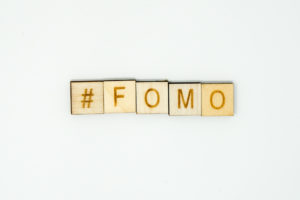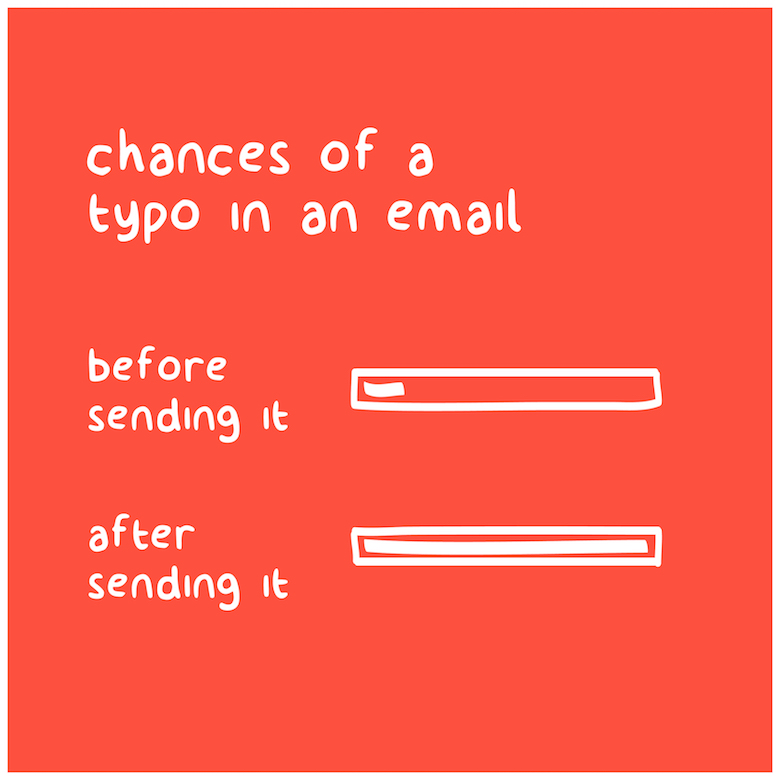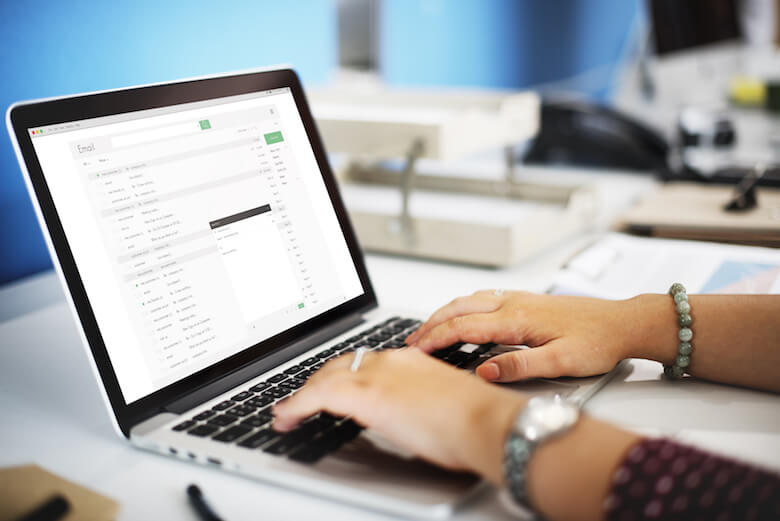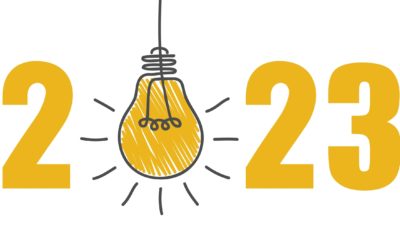In an age where a first impression may be made without meeting someone first, it’s crucial you’re aware of email marketing etiquette. If you want to make the most of your efforts, you need to be sure you’re not committing a faux pas that could have you end up in the junk folder, or worse, having people tell their friends to work with someone else.
Staying in front of the customer is a must for small business owners. And there’s no better way to improve awareness, conversion, and retention than with a solid email marketing strategy.
Here are 16 ways to ensure every email you send will resonate with your target audience as intended.
Bonus Content: Grab a copy of our Email Marketing Roadmap.
1. AVOID ALL CAPS.
Occasionally, caps work to put emphasis on a word or phrase. But more often than not, your audience feels like you’re YELLING AT THEM! Err on the side of good email etiquette and avoid the caps lock entirely.
2. Don’t overuse exclamation points!!!
Similar to all caps, exclamation points are easily misinterpreted. When used sparingly, the exclamation point can effectively communicate excitement. But go too far and you also risk coming across as overly enthusiastic or even insincere. A good rule is to limit yourself to one exclamation point per business email.

3. Don’t abuse the bold, italics and underline styling.
While these features can be used to emphasize a point, too much of a good thing goes bad quickly. An email full of bold, italicized and underlined text could come across as aggressive, or even rude. If nothing else, it’s distracting and confusing.
4. Watch your tone.
Your emails represent your brand, so it’s important to be both positive and professional. Avoid negative language, and when possible, try to frame negative messages in a more positive light.
For example, instead of saying, “you missed the deadline,” which sounds accusatory, take a more neutral approach and say, “the deadline passed.”
5. Keep the message clear, concise and easy to read.
Studies have shown that people misinterpret the tone and meaning of emails as much as 50 percent of the time. That’s a 50/50 shot your messaging can get lost. The best way to avoid this email etiquette faux pas is to eliminate unnecessary and ambiguous language.
6. Keep humor to a minimum.
Recent surveys have shown that many people find humor acceptable in an email. The problem with humor is that it’s entirely subjective. What you find funny, someone else may find offensive.
Plus, the absence of vocal and facial cues makes it difficult to know when someone is joking in an email. If you don’t know the recipient well, or if you’re not sure the joke reads in an obvious way, save the humor for another occasion.
7. Avoid the use of slang.
While email communications can be relaxed, friendly and informal, you still want to sound professional. Believe it or not, survey respondents were strongly against the use of slang in emails. In fact, over 40 percent of survey respondents ages 18-24 considered slang “totally unacceptable.” So save the BRBs and TTYLs for texting.

8. Keep salutations professional.
You don’t need to be over-the-top formal, just respectful. A simple “hello” or “good morning” will do. As you get to know recipients better, you can take a less formal approach if it’s appropriate. Using the recipient’s name adds a personal touch, but make sure to use the name they prefer.
Pro tip: Don’t shorten names on your own or create nicknames. As anyone who goes by Daniel or Katherine can tell you, getting an email addressed to “Danny” or “Katie” is both rude and disrepectful.
9. Close in a respectful manner.
Your sign-off can be as simple as “sincerely” or “thank you.” Always include your relevant contact information, so the recipient knows how to reach you. To make things easy, create a professional email signature that includes your name, job title, company, business address and phone number.
10. Keep your emails mobile-friendly.

After all, 91 percent of consumers check email on their smartphone at least once per day. Remember, special fonts and emojis don’t play well across all devices.
If you must include photos, add them as attachments. You don’t want to force recipients to wait for photos to load to get access to your message.
11. Always provide valuable content.
No one wants a constant sales pitch. If you can provide information or start an interesting conversation, your audience will respond.
Use list segmentation and create a targeted message for each segment group. The more you speak to the direct needs of the recipient, the better your results will be.
12. Don’t exhaust your audience with too many emails.
Determining the best email frequency for your business requires some experimentation, trial and error. But, in general, we recommend reaching out one to four times each month. This may sound like a lot or barely anything, depending on your business. However many emails you send, the goal is to stay top of mind without annoying your recipients.
13. Avoid lengthy email subject lines.
Email open rates are highest when subject lines are six to 10 words long, approximately 50 characters in length. So keep your subject lines short and to the point. Remember, you want the recipient to open the email. Make the subject enticing, but don’t give away so much information that there’s no reason to read more.
Here’s an example of a subject line that says too much: “Our research shows that emailing customers twice a month can lead to optimal open rates.”
A better subject line would be “How Often Should You Email Customers?” It poses an interesting question without giving away the answer, so the recipient is more likely to open the email to find out.
14. Always proofread before hitting send.

A sloppy, error-ridden email does nothing for your email etiquette reputation. Your readers shouldn’t have to proofread and edit your work to understand your message. Check and double-check everything from the subject line to the email signature, including grammar, capitalization, punctuation, and spelling.
Pro tip: Also remember to check all links! Recipients who click a link that takes them nowhere will likely abandon your email altogether.
15. Respond to emails in a timely fashion.
Try to respond to everyone within 24 hours, if possible, including those who contact you by mistake. If a proper response is going to take additional time, shoot the sender a quick note to let them know you’ll be following up ASAP. This approach is not only a top-notch example of stellar email etiquette, but it also keeps your inbox clean and allows everyone to move forward with their business.
16. Don’t get tripped up by Reply All, CC and BCC features.
Here’s a quick breakdown:
- Use Reply All when the conversation is important to everyone in the thread.
- Use CC to include people on a need-to-know basis.
- Use BCC when mailing to a bulk list or when the privacy of the recipients is essential.
If your email doesn’t fit in these categories, stick with a single recipient. You can always add more people to an email thread later on.
We hope these best practices for email etiquette will help elevate your email marketing game. We know how busy professionals and business owners get, so if you’re short on time, we’re here to automate the process. Learn more about how OutboundEngine markets your business for you so you can focus on sales.





